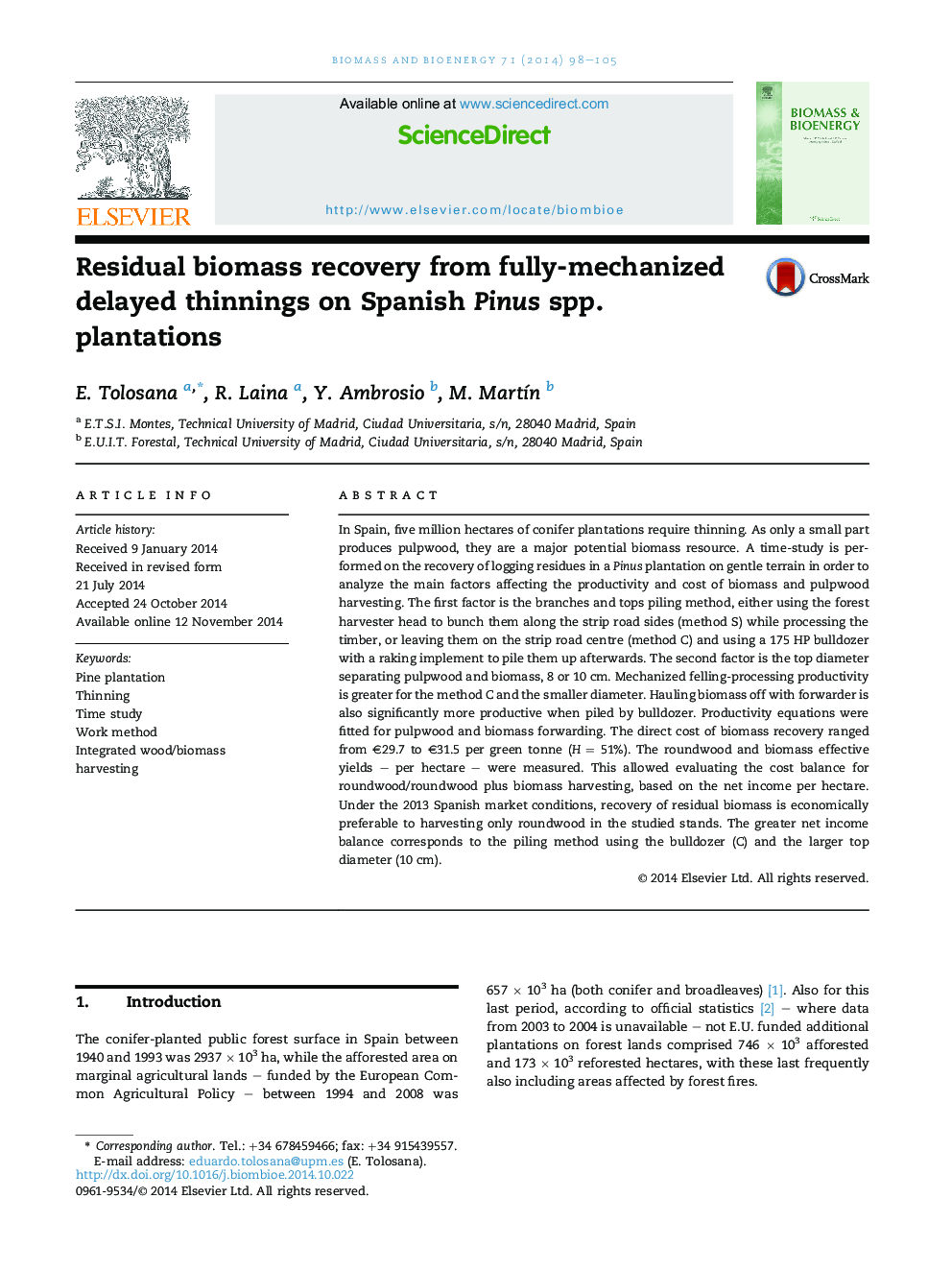| Article ID | Journal | Published Year | Pages | File Type |
|---|---|---|---|---|
| 676807 | Biomass and Bioenergy | 2014 | 8 Pages |
•Branches and tree tops collection is an alternative to WTS in plantation thinnings.•Collecting residues in delayed thinnings on gentle terrain can be profitable.•Maximum net balance per ha can optimize the harvesting of different forest products.•Leaving residues on the strip road and bunching them with bulldozer is more efficient.•Greater top diameter makes residues and wood harvesting more profitable in Spain.
In Spain, five million hectares of conifer plantations require thinning. As only a small part produces pulpwood, they are a major potential biomass resource. A time-study is performed on the recovery of logging residues in a Pinus plantation on gentle terrain in order to analyze the main factors affecting the productivity and cost of biomass and pulpwood harvesting. The first factor is the branches and tops piling method, either using the forest harvester head to bunch them along the strip road sides (method S) while processing the timber, or leaving them on the strip road centre (method C) and using a 175 HP bulldozer with a raking implement to pile them up afterwards. The second factor is the top diameter separating pulpwood and biomass, 8 or 10 cm. Mechanized felling-processing productivity is greater for the method C and the smaller diameter. Hauling biomass off with forwarder is also significantly more productive when piled by bulldozer. Productivity equations were fitted for pulpwood and biomass forwarding. The direct cost of biomass recovery ranged from €29.7 to €31.5 per green tonne (H = 51%). The roundwood and biomass effective yields – per hectare – were measured. This allowed evaluating the cost balance for roundwood/roundwood plus biomass harvesting, based on the net income per hectare. Under the 2013 Spanish market conditions, recovery of residual biomass is economically preferable to harvesting only roundwood in the studied stands. The greater net income balance corresponds to the piling method using the bulldozer (C) and the larger top diameter (10 cm).
